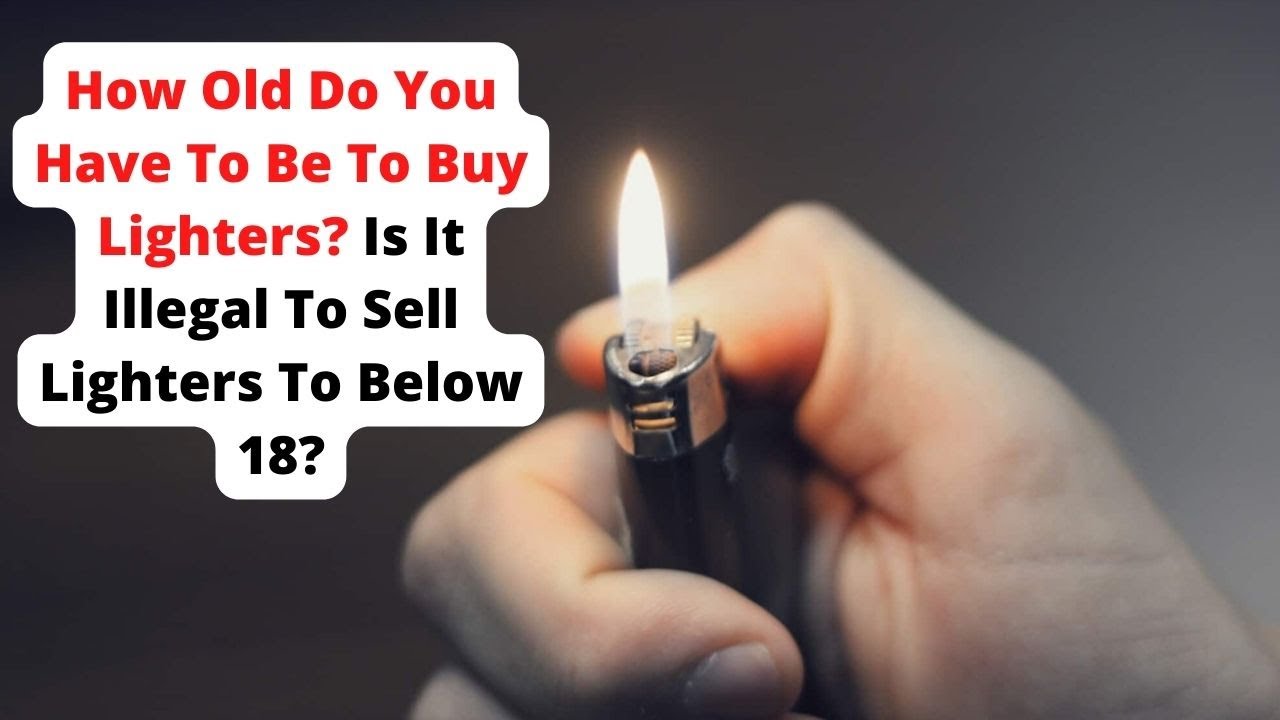How Old do you have to be to Buy Lighters

The question of age restrictions on purchasing lighters may seem straightforward, but it delves into a complex web of regulations, cultural norms, and safety concerns. While lighters are ubiquitous tools for lighting cigarettes, candles, and grills, they also present potential hazards, especially in the hands of minors. Understanding the legal framework and societal considerations surrounding the age requirement for buying lighters provides insight into broader issues of public safety and personal responsibility.
Legal Landscape:
The regulations governing the sale of lighters vary significantly across different jurisdictions. In many countries, there are no specific laws dictating the minimum age for purchasing lighters. Instead, the sale of lighters falls under general age restriction laws for tobacco or smoking-related products. For instance, in the United States, the legal age to purchase tobacco products, including lighters, is 21, following the implementation of the Tobacco 21 law in 2019.
However, there are exceptions to this rule. Some states and local municipalities may have their own regulations regarding lighter sales. In these areas, the minimum age requirement could be 18 or even younger. Similarly, some countries enforce stricter age limits for purchasing lighters, aligning them with the legal age for purchasing tobacco products.
Safety Concerns:
One of the primary reasons behind age restrictions on lighter sales is safety. Lighters, especially those with adjustable flames or child-resistant mechanisms, can pose significant risks if mishandled. Young children and adolescents may lack the maturity and awareness to use lighters safely, increasing the likelihood of accidents such as burns or fires.
Furthermore, there are concerns about minors using lighters for unintended purposes, such as starting fires or experimenting with dangerous activities. Restricting access to lighters through age requirements helps mitigate these risks and encourages responsible behavior.
Retail Practices:
In jurisdictions where age restrictions apply to lighter sales, retailers play a crucial role in enforcing these regulations. Many stores, particularly those that sell tobacco products, have implemented age verification protocols to ensure compliance with the law. This may involve checking identification cards or using electronic age verification systems at the point of sale.
However, enforcement can be challenging, especially in settings where lighters are sold alongside other household items or in vending machines. Some retailers may prioritize convenience over strict adherence to age restrictions, leading to inconsistencies in enforcement practices.
Social and Cultural Factors:
Beyond legal and safety considerations, the age requirement for buying lighters is influenced by social and cultural factors. Smoking, in particular, carries significant stigma and health risks, leading to heightened scrutiny of products associated with smoking, including lighters. As such, policymakers and public health advocates may advocate for stricter regulations to discourage smoking initiation among young people.
Moreover, societal norms regarding the appropriate age for certain behaviors, such as smoking or using fire-related tools, shape attitudes toward lighter sales. Parents, educators, and community leaders often emphasize the importance of responsible decision-making and the dangers of underage smoking and fire-related accidents.
Conclusion:
The question of how old one must be to buy lighters is not easily answered, as it depends on a variety of factors, including legal requirements, safety concerns, retail practices, and cultural norms. While many jurisdictions impose age restrictions on lighter sales to mitigate safety risks and discourage underage smoking, enforcement and compliance remain ongoing challenges.
Ultimately, promoting responsible behavior and fostering awareness of the potential hazards associated with lighters are essential in ensuring public safety and reducing the incidence of accidents and misuse. By addressing these issues through a combination of legislation, education, and community engagement, society can strive to strike a balance between individual freedoms and collective well-being.





